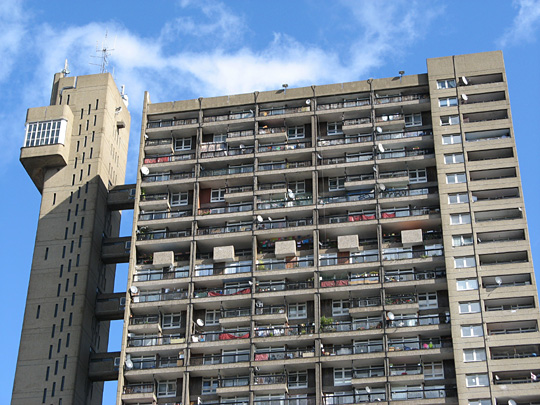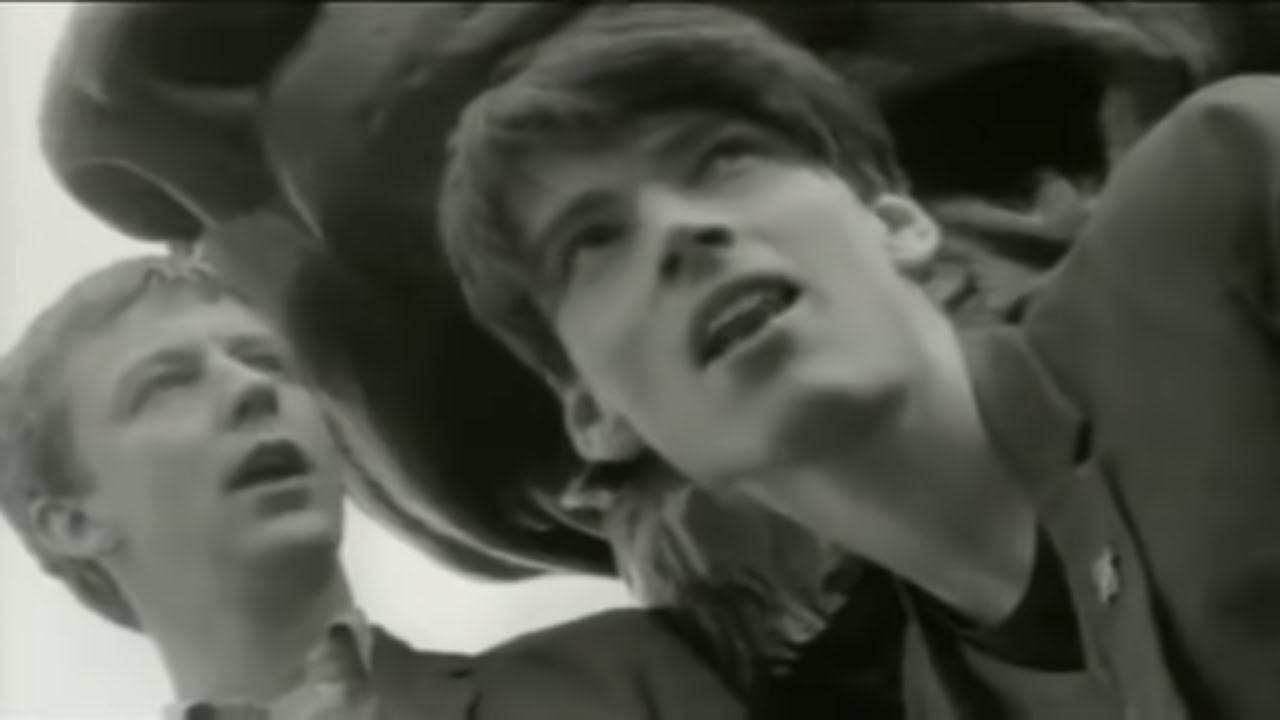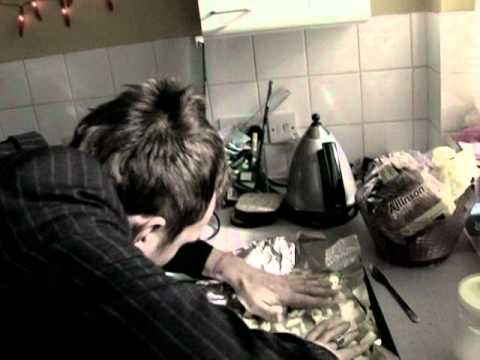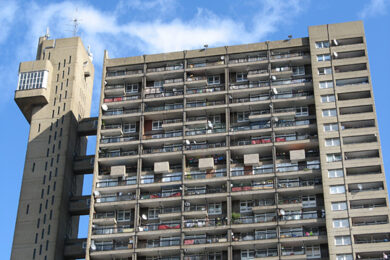At the end of February, Southwark Council published its plans for the Heygate estate.
Situated in the heart of Elephant & Castle, on the edge of Zone 1, the estate is on the front line of a bitter battle against local authority housing. The plans, which have been drawn up with the help of property giant Lend Lease, are the centrepiece of Southwark’s much-derided ‘regeneration’ project. When it was full, the Heygate housed some 3,500 tenants in 1,200 properties. Today the estate is all but empty, its residents having been “decanted” elsewhere. After redevelopment the total density will be doubled – and yet the number of so-called affordable properties will be halved.
The Heygate, along with its sister the Aylesbury, is a cipher for housing in the neoliberal city. On the edge of the worst housing crisis in a generation local authorities are demolishing affordable homes, replacing them with glistening new developments in which only the rich can afford to live. Communities are destroyed as land is transferred into the private sector, while the poor are pushed ever further out of the capital.
Council blocks have provided some of the defining elements of London’s landscape. The postcards and the airline billboards might foreground the glass-and-steel phalluses of the City, but for residents the capital’s architecture is defined by the cloud-grazing towers of the east, or the centipedial, prefab sprawls of the south. These developments have marked the city in an endlessly exciting way, turning London into a crucible of residential experimentation.
But the public, and particularly Middle England’s public, tend not to get on with council blocks. The great utopian housing projects of the 1950s and ‘60s, once considered symbols of a collectivist future just round the corner, are now derided as carbuncles – as an ugly reminder of a period in which, to many people’s minds, local government in the capital flirted dangerously with socialism. In 1987 professional architecture lobbyist Prince Charles said of London’s Brutalist landscape: “You have to give this much to the Luftwaffe – when it knocked down our buildings, it didn’t replace them with anything more offensive than rubble.” This gag-reflex response to bare concrete has characterised the country’s relationship with council blocks for the last three decades. Local authorities’ failure to maintain the buildings has exacerbated the problem, and many would now like to see the blocks expunged from the city altogether.
Council housing’s problem has often been one of representation. Distaste for local authority blocks has been fed by cultural depictions and political rhetoric. Journalists, directors, scriptwriters, and MPs all helped make council blocks synonymous with horror. Newspapers used them as backdrops for ever-popular stories of real-life tragedy; filmmakers seized on them as settings for kitchen sink drama; politicians appropriated them as symbols of their predecessors’ failures.
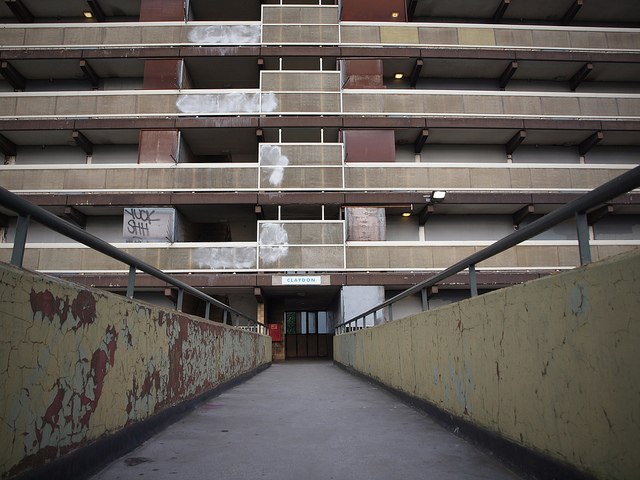
Photo courtesy of Arthur John Picton
Musicians have also been keen to use council housing as a marketing tool – some as a symbol of supposed class credentials, others as a tool to impart unit-shifting edginess. Some, like recent Quietus interviewee Damon Albarn, have done both. Albarn’s career provides a neat illustration of the way in which those remarkable constructions have been exploited by artists and their marketing departments – but it also serves as a mirror for the public’s perception of (and reaction to) local authority architecture.
Throughout his career Albarn has used the Trellick Tower as a video location. Completed in 1972, the thirty one-storey Trellick is one of the country’s best-known Brutalist buildings. Commissioned during the Notting Hill slum clearances of the mid 1960s, the block was initially owned by the now-defunct Greater London Council. It occupies a unique position, standing proudly astride a low-rise hinterland into which the terrace extensions and pseudo-rustic cafes of Ladbroke Grove are gradually seeping.
From the foot of the Trellick one sees an endless series of windows cascading ever upwards. The main tower, into which the flats are built, is startlingly proportioned; breath-catchingly tall, but deep enough to appear solid – brazen, even. The flats are attached by a series of covered walkways to a second tower which houses lifts, stairs, and waste chutes. The towers extend below street level, and a crater has been carved out into which a small park and nursery have been inserted. The Trellick’s sheer scale, its audacity, make it one of London’s most remarkable buildings.
Albarn first turned to the Trellick for the video for Blur’s ‘For Tomorrow’, made in 1993. The promo consists of shots of the band in various ‘classic’ locations around London: kicking bins in Trafalgar Square, hanging off the back of a Routemaster, flying kites on Primrose Hill. The four-minute clip, directed by Sex Pistols collaborator Julien Temple, seems to flit between decades, cribbing from cinematic movements of the ‘50s and ‘60s as it does so. The opening shot, which zooms in on Albarn’s body in the Thames, apes the wobbly mid-century newsreel style. Later, scenes in Trafalgar Square use lurching, oblique angles, recalling the French New Wave.
The first two thirds of the video cast the band as a group of dapper chancers, cavorting around a cheerful post-war London. The ‘la la’ duties are passed to a chorus of pensioners, schoolchildren, and mothers in various locations around the Trellick – all smiling, all apparently living in a happily inclusive capital of chimney sweeps, market traders, and chuckling grandparents. The video is shot through with the neighbourly optimism of the ‘50s – and it is this very optimism with which London’s first residential towers were greeted. Many of the blocks most hated today were in fact popular at the point of their construction. The estates were designed to encourage contact, the ‘streets in the sky’ intended to provide a hinge around which communities would form. Residents were reportedly happy with the size of their rooms, the comparatively good build quality and, of course, the inclusion of basic amenities in their homes. The stigma that is now often associated with council housing was still yet to materialise – partly because the post-war welfare consensus was still respected.
Soon, though, the sheen came off the modernist ideal. Architectural compromise and structural inequality combined to produce environments that came to be thought of as but scant improvements on the slums they had replaced. The Brutalist dream became, for some, a very brutal reality indeed. Estates began to fall apart, and local authorities didn’t have the money to repair them. Rising unemployment fueled increases in crime, and the political and journalistic discourse began to tilt firmly against local authority tenants. Reporters started referring to the Trellick as the ‘Tower of Terror’, recounting with ever-increasing glee a spate of muggings, rapes, and assaults. Many residents now suggest that the reality followed the representation; that life on the estates quickly began to conform to the Victorian imagery used in the media. As the idea of the ‘sink estate’ became ever more ingrained, council tenants fought ever harder to stay out of them. The ones that did go were often the ones with no other choice – those with the very worst problems. The journalists’ horror stories became self-fulfilling. The Trellick, with its open front door, became a magnet for vandalism. Around Christmas 1972, the tower was without power or water for days after someone flooded the 12th floor by opening a fire hydrant. The residents of the Trellick were left to fend for themselves.
Then, during the 1980s, things began to change. A new residents’ association successfully lobbied for better security. An intercom system was installed, and a new concierge helped to prevent non-residents walking in off the street. Gradually, imperceptibly, the Trellick lost some of its baggage. Where residents had previously fought to stay out of the Tower, they now wanted to stay put. Vacancies were seldom available.
By the time Albarn returned in 2000, to make the video for Gorillaz’s ‘Tomorrow Comes Today’, the blocks were being exploited in a different way. The Sunday supplements were no longer playing up the dark side of the towers, preferring instead to write property columns about their well-appointed rooms and ‘real London’ atmosphere. Urban decay became the marketing departments’ aesthetic of choice. Artists and brands were desperate to coat themselves in a patina of edginess, and they achieved this through associations with graffiti, tower blocks, and approximations of youth culture. This was the world of Banksy and Vice; of the sublimation of ‘alternative’ lifestyles into the mainstream. Thus the video for ‘Tomorrow Comes Today’, the band’s first, consists of Jamie Hewlitt’s animations, half spraycan half Manga, pasted over timelapse images of motorways, neon-lit carparks, and London council blocks – of which the most prominently featured is the Trellick.
‘Tomorrow Comes Today’ perfectly encapsulates the relationship of the metropolitan media with the urban landscape during the early and mid 2000s. There is a sense of confusion; a feeling that Hewlitt, who directed the video, knew that graffiti-covered tower blocks would provide a combination of grit and disquiet, but that this is as far as his insight went. In truth, the clip is little more than a photo-montage; a flick-book of images that might as well have been taken by a college photography student on their first, world-view-changing visit to the big city. The over-riding feeling is one of ambivalence. Hewlitt and Albarn seem confused: is this landscape ‘cool’? Is it desirable? Are we paying homage to it, or do we want edge by association?
This ambivalence continues even today. As a result of Right to Buy, a small number of flats in the Trellick began to appear for sale during the ‘90s. Were you to take a photograph of the tower and show it to the first hundred people you saw on the High Street, one suspects that the vast majority would baulk at the idea of living there – and yet property in the tower is so coveted that prospective residents pin notices in the entrance hall on the off chance that someone will part with their flat. Many buyers of the uniquely designed two-floor maisonnettes are reportedly modernist architecture enthusiasts (the building was awarded Grade II listed status in 1998); others are drawn by its history. Notting Hill is on your doorstep – but you are high above it, cosseted in one of the country’s most iconic buildings, enjoying views that stretch as far as the Downs. A twenty-first floor flat is currently on the market for £465,000.
There is a sense of class tourism in the new enthusiasm for the Trellick. The image of hip new residents quietly congratulating themselves on their taste for grit is inescapable. It is fitting, then, that Albarn, one of the country’s wealthiest musicians, returned in 2007 with his band The Good, The Bad & The Queen, to shoot the video for ‘Kingdom Of Doom’ – a promo that consists entirely of visual synonyms for ‘working class’. Albarn makes a fry up for his bandmates on a small gas stove; Simon Tong washes tea mugs in the sink; Paul Simonon and Tony Allen play dominoes on the kitchen table. A grey pall covers everything. Albarn sings the first line as the camera flies in through the window: “Friday night in the kingdom of doom.” It is the doom-laden history of the Trellick on which Albarn draws – a history that he, of course, was never forced to live.
Conditions in the Trellick have improved significantly. Sadly, though, many of London’s local authority developments are yet to experience a renaissance of the sort this inimitable building has enjoyed. Tony Blair chose the Aylesbury as the location for his first speech as Prime Minister, a decade and a half ago, promising to work for the “forgotten people” of that and other ‘blighted’ estates. Today, the Aylesbury is in limbo; stuttering on, slowly crumbling, while Southwark scratches the money together to knock it down – against the wishes of its residents, most of whom would prefer to see their homes refurbished.
But residents’ wishes count for very little when they are taking up space right on the edge of Zone 1. The Aylesbury, and its sister the Heygate, will be the site of yet another land grab – and in the meantime the tenants’ homes have been left to rot, abandoned by a local authority with neither the money nor the will to maintain them.
But, never ones to pass up easy cash, Southwark has been happy to rent out the location to filmmakers eager to secure that 28 Days Later look. Between 2007 and 2011 the Council received more than £200,000 in location fees for the use of the Heygate and the Aylesbury. In 2007 the Heygate provided a suitably dystopian backdrop for the video for David Guetta’s ‘Love Don’t Let Me Go’, which features free-runners clambering across the abandoned estate. Dancers leap through glassless window frames and the men compete on the scuffed concrete for the attention of the women, as if in some elaborate Medieval courting ritual. The estate was full at this point – and yet there are no traces of the residents in the video. For Guetta’s director the Heygate was an abandoned hinterland – a Marie Celestial shell. For the residents it is a difficult, conflicted place; a contested space in the heart of the city, and a frontline in the increasingly violent war being waged on the working class.
Guetta’s expulsion of the Heygate’s residents is likely to prove a vision of things to come. Cuts to housing benefit, combined with the ongoing transfer of social housing to the private sector, threaten to push council tenants further and further out of the capital. Speculation will continue to inflate land prices, and developers will no longer tolerate the presence of local authority housing on high-value plots. First it will be the poor that are driven out; then they will be followed by the middle class, their stagnant wages no longer sufficient to cover the rapidly rising rents. London will become a city-sized gated community into which commute the service workers, on whom the rich rely.
Representation matters. The Trellick is safe, having developed a cachet of modernist cool thanks, in part, to its appropriation by artists like Albarn. But for the residents of estates with less architectural or cultural capital than the Trellick, life is increasingly precarious, as evidenced by the demolition not just of the Heygate but also of Newham’s Carpenters Estate, parts of which are being knocked down to make way for the Olympics – an event for which Blur, ironically, are playing the closing ‘celebration’ show. Dystopian depictions of these sites, of the sort found in Guetta’s video (“sink spectacles”, as architectural historian Ben Campkin has it), foster and underscore a sense of irreparable decay, making arguments for demolition easier to win. In the midst of a deepening housing crisis, we should be holding on to these imperfect, ambitious estates: rebuilding them, recognising and fixing their faults, and above all, keeping them in public hands.

